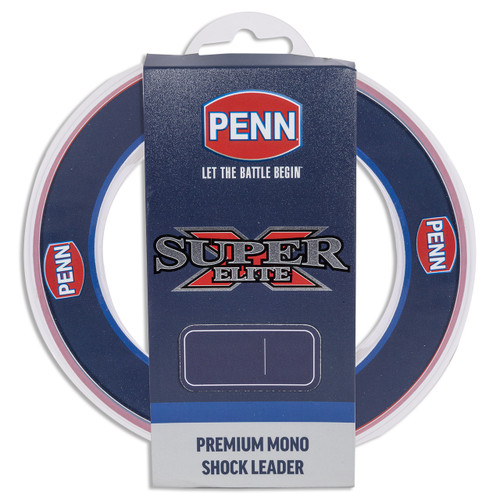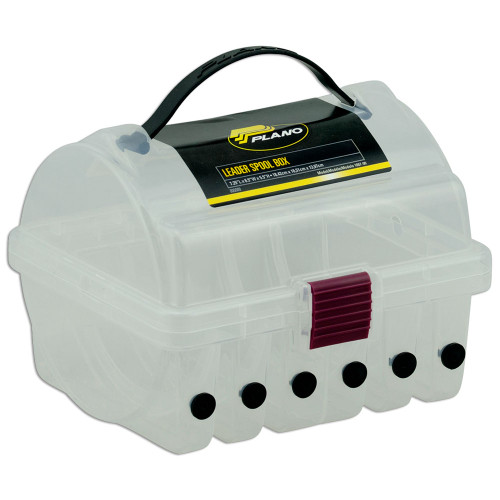A Tackle Shop Guide to Penn Super X Elite Leader
With so much talk about fluorocarbon these days, a lot of anglers still ask, "Does anyone still use mono leader?" The answer we give them is simple: yes, all the time. While fluorocarbon is known for its invisibility, a high-quality monofilament shock leader like Penn Super X Elite is often a better choice for heavy-duty saltwater fishing. When you need superior abrasion resistance against reef, a bit of shock absorption for a powerful strike, or a leader line that works better for topwater lures, a good mono is still an excellent choice.
A Note From Our Local Experts
"I've sold Penn products for over 20 years, and my sales data shows a massive following for the brand. Anglers trust it. While I haven't personally used this new Super X Elite, I know what it's built for. It's a modern monofilament that's designed to be tough, abrasion-resistant, and have good knot strength for fishing our local illawarra reefs from shoalhaven to wollongong as well as any other saltwater fishery in Australia. It's competing directly with fluorocarbon by offering a different set of advantages, particularly for anglers fishing heavy structure or trolling."
- Ben Czulowski, Owner, Fishing Tackle Shop (Ocean Storm) | 20+ years industry experience
Decoding the Penn Super X Elite Features: What Matters
This isn't just a standard spool of nylon. The features are designed to solve specific problems that anglers have with older monofilaments:
Pro-Tips for Using Penn X Elite Mono Leader
Getting the most from a monofilament leader is easy with a few small habits.
- Always Wet Your Knots: This is the most important rule for mono. Before you pull a knot tight (especially to a hook or lure), wet it with a bit of saliva. This lubricates the line, stops friction burn from weakening it, and lets the knot seat perfectly.
- Choosing a Knot: For connecting this leader to braid, a slim, strong knot is key. We suggest the FG Knot or a well-tied Double Uni Knot in the shop.
- Fixing Line Memory: If the leader has some "memory" (coils) from being on the spool, you can fix it. After tying it on, just run the leader firmly (but carefully) between your thumb and a piece of neoprene or a soft cloth. This will warm it slightly and straighten it out.
Technical Specifications: Penn Super X Elite
| Breaking Strain | PE Rating | Diameter | Length |
| 15lb | PE 1.5 | 0.31mm | 100m |
| 20lb | PE 2 | 0.37mm | 100m |
| 30lb | PE 3 | 0.47mm | 100m |
| 40lb | PE 4 | 0.55mm | 100m |
| 50lb | PE 5 | 0.62mm | 100m |
| 60lb | PE 6 | 0.7mm | 100m |
| 80lb | PE 8 | 0.8mm | 50m |
| 100lb | PE 10 | 0.9mm | 50m |
| 120lb | PE 12 | 1mm | 50m |
Frequently Asked Questions
Why would I use Penn Super X Elite Leader instead of fluorocarbon?
That's the main question we get. The choice comes down to different lines for different fishing applications. Fluorocarbon is less visible and often sinks faster. Penn Super X Elite leader's main advantages are its shock absorption (it has more stretch, which acts like a shock absorber for a sudden strike) and its specific type of toughness. While fluoro is very hard, a modern coated-mono like this one is built to handle scrapes, and many anglers trust it more for that shock-buffering quality, especially when trolling.
Is Penn Super X Elite a good leader for topwater poppers or stickbaits?
Yes, and it's often a better choice than fluorocarbon. Because mono is typically more buoyant (or neutral), it doesn't pull the nose of your popper or "walk-the-dog" stickbait down so much. It lets the lure sit more naturally on the surface, giving it a much better action.
What is 'abrasion resistance' and why does it matter?
This is simply the leader's ability to get scraped on rough surfaces without breaking. If you're fishing near reef, rocks, or oyster beds, a fish will try to bust you off on that structure. This leader is built to be tough, so it can handle that kind of contact better than a softer line.
What is 'shock absorption' (stretch) and why does it matter?
This refers to the line's ability to stretch slightly under sudden pressure. When a big fish hits a trolled lure, the strike is violent. That bit of stretch in a mono leader acts like a safety buffer, absorbing the shock and helping to prevent the hooks from tearing out of the fish's mouth.
Is this leader for freshwater or saltwater fishing?
It's designed for both, but its main strength is in saltwater. The range goes from 15lb up to 120lb, so it covers everything. The lighter 15lb-20lb strains would be fine for freshwater, but the heavy-duty abrasion resistance is really aimed at tough saltwater species.
How should I choose the right breaking strain?
As a general rule, for lure fishing for species like flathead or snapper, a 20lb-40lb leader is a good starting point. For heavy reef fishing or targeting kingfish, you'd be looking at 60lb-80lb. For offshore trolling for mackerel or tuna, 80lb-120lb is more common.
A tough, easy-to-handle mono leader built for Australian conditions. Choose your Super X Leader size and add a spool to your cart.





 CAD
CAD
















